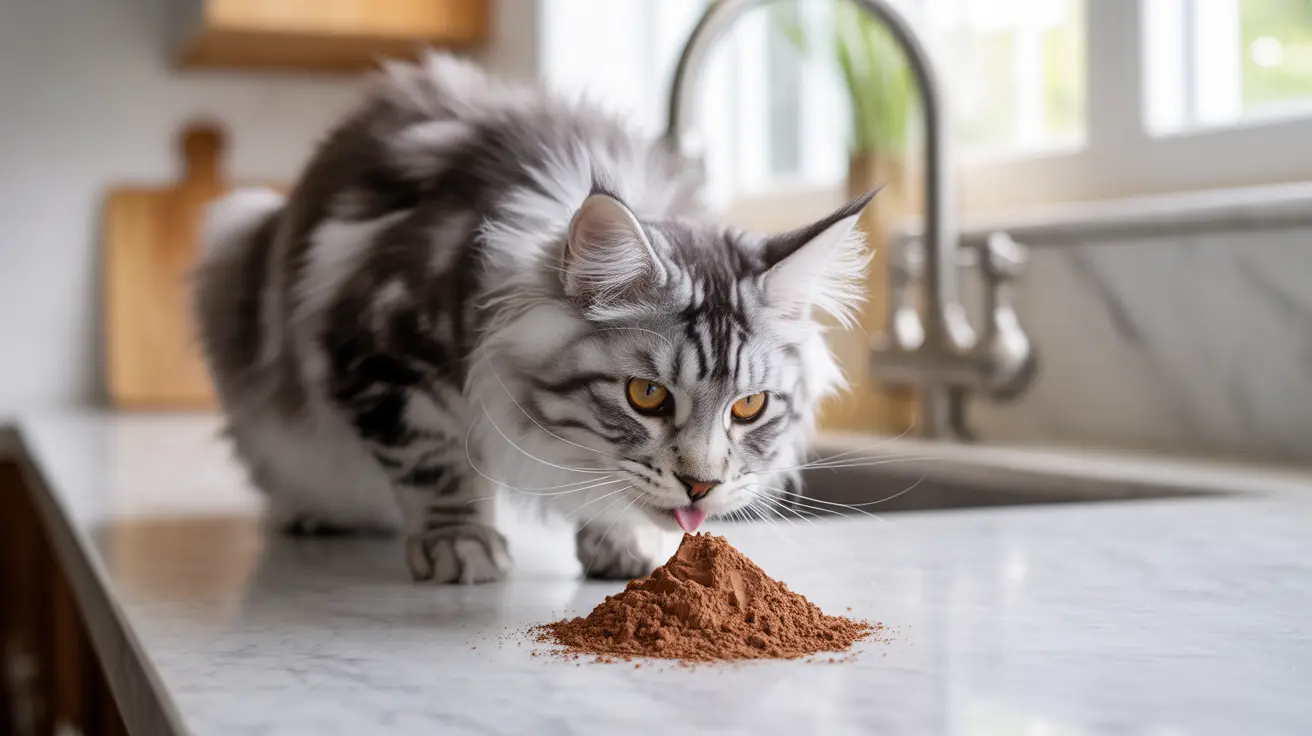Introduction
As pet owners become more conscious about treating their feline friends, many wonder "can cats have carob?" as a safer alternative to chocolate. This natural chocolate substitute, derived from the carob tree's pods, has gained popularity among health-conscious humans. But what about our feline companions? Let's explore the safety, benefits, and considerations of offering carob to cats.
Understanding carob's role in feline nutrition is crucial for responsible pet ownership. While it lacks the dangerous compounds found in chocolate, there are still important factors to consider before sharing this treat with your cat.
What Is Carob and Why Is It Different from Chocolate?
Carob is a natural substance harvested from the pods of the carob tree (Ceratonia siliqua). Unlike chocolate, it contains no theobromine or caffeine—the compounds that make chocolate toxic to cats. This fundamental difference makes carob inherently safer for feline consumption.
The powder has a naturally sweet, nutty flavor and is often used in human foods as a chocolate substitute. However, it's important to note that cats can't actually taste sweetness, as they lack the necessary taste receptors.
Safety of Carob for Cats
Carob is generally considered safe for cats in small amounts. The ASPCA officially lists carob as non-toxic to cats, providing peace of mind for pet owners. However, "safe" doesn't necessarily mean "beneficial," and moderation is key.
While carob won't cause the dangerous effects associated with chocolate consumption, such as increased heart rate or seizures, it should still be treated as an occasional treat rather than a dietary staple.
Nutritional Considerations
Cats are obligate carnivores, meaning their bodies are designed to process and utilize nutrients primarily from animal sources. While carob contains antioxidants and fiber that benefit humans, cats' digestive systems aren't optimized to extract these nutrients from plant matter.
The minimal nutritional value of carob for cats means it should never replace proper feline nutrition through high-quality cat food. Any carob treats should make up no more than 10% of your cat's daily caloric intake.
Guidelines for Offering Carob to Cats
Start Small
If you decide to offer carob to your cat, begin with a tiny amount to monitor for any adverse reactions. Watch for signs of digestive upset such as vomiting or diarrhea.
Choose the Right Form
Only use plain, unsweetened carob without any artificial sweeteners or additives. Avoid carob products made for human consumption, as these often contain other ingredients that could be harmful to cats.
Monitor Consumption
Even though carob is safe, excessive consumption can lead to digestive issues. Limit treats to occasional small portions, and always prioritize your cat's regular diet.
When to Avoid Carob
Some cats should avoid carob entirely, including those with:
- Digestive sensitivities or conditions
- Weight management issues
- Diabetes or other metabolic disorders
- Known allergies to new foods
Always consult with your veterinarian before introducing any new treats to your cat's diet, including carob.
Frequently Asked Questions
Is carob safe for cats to eat as a chocolate substitute?
Yes, carob is safe for cats to eat in small amounts as it doesn't contain theobromine or caffeine, the toxic compounds found in chocolate. However, it should only be given occasionally as a treat.
What are the potential digestive effects of feeding carob to cats?
While carob is non-toxic, excessive consumption can cause digestive upset, including nausea, vomiting, or diarrhea, since cats' digestive systems aren't designed to process large amounts of plant matter.
Do cats actually like the taste of carob since they can't taste sweetness?
Cats cannot taste sweetness, so any interest in carob would be due to its texture or other properties rather than its sweet flavor. Individual cats may show varying levels of interest in carob.
How does carob compare to chocolate in terms of toxicity and health risks for cats?
Carob is significantly safer than chocolate for cats because it lacks theobromine and caffeine. While chocolate can be lethal to cats, carob poses no toxic risk, though it should still be given in moderation.
What precautions should I take before giving my cat carob treats?
Start with very small amounts, use only plain, unsweetened carob, and monitor your cat for any adverse reactions. Consult with your veterinarian first, especially if your cat has existing health conditions.
Conclusion
While carob is a safe alternative to chocolate for cats, it's important to remember that "safe" doesn't equal "necessary." If you choose to offer carob to your cat, do so sparingly and always prioritize their proper feline nutrition through high-quality cat food. When in doubt, consult with your veterinarian about the best treats for your particular cat's needs and health status.






